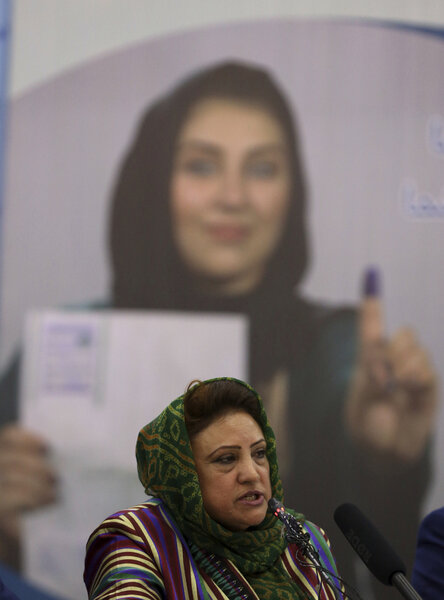Afghan triumphs drive Afghan truce
Loading...
Women in Afghanistan now attend university in record numbers. In the capital, Kabul, a fast-food restaurant just introduced the country’s first robotic waiter. On Tuesday, officials announced the results of a presidential election – the fourth since the ouster of the Taliban. And in the latest survey, 64% of Afghans say they believe reconciliation with the Taliban is possible, a jump of 11 percentage points in only one year.
Since the United States-led invasion 18 years ago, Afghanistan has experienced slow and uneven progress toward a free and democratic society. Attacks by the rural-based Taliban remain high. Yet progress is palpable enough that it partly explains why the U.S. and Taliban are ready to ink an agreement on a pathway for peace.
For now, the details of the proposed agreement are less important than its initial requirement: a seven-day “reduction of violence” between U.S. and Taliban forces. The limited truce, which could start in coming days, will be a test of credibility for Taliban leaders. Can they control their lower ranks? Will they eventually keep a total cease-fire?
Over 18 years, Afghan society has changed enough that perhaps the Taliban know they must earn people’s trust rather than impose their harsh Islamist ways. Or as Afghan President Ashraf Ghani challenged the militant group: “If people elect you dogcatcher, then I would say you really have a power base. Guns are not the basis of power.”
If the short “reduction in violence” period succeeds, it might inspire confidence for a sequence of other trust-building steps, such as the start of a partial withdrawal of U.S. troops and an exchange of prisoners by the Taliban and Afghan government. The most significant step would be the Taliban starting direct talks with Mr. Ghani’s elected government.
These “intra-Afghan” talks would imply a tacit approval by the Taliban of a willingness to work within a democracy and its acknowledgment of how much Afghans support – 87% according to the survey – the rights and liberties of their constitution.
The Taliban may finally be accepting the limits of fighting to achieve their aims. In the U.S., both President Donald Trump and his Democratic rivals for the White House seek to end America’s longest war. Yet it is the Afghans themselves, in how they have been able to improve their lives and how much they cherish their civic rights, who are setting the table for the difficult and complex talks ahead. Afghans may be divided by ethnic feuding and divided politics. Yet their preference for reconciliation and for the protection of their democratic achievements is clear. It will be difficult to ignore their preferences during the negotiations.





